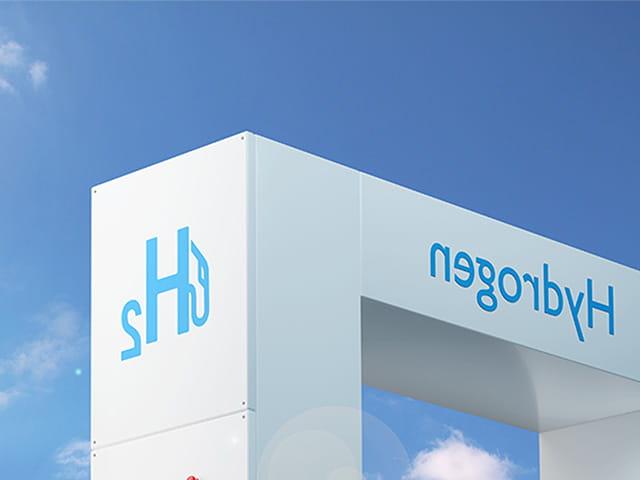Simulating gust-induced 晃动 in the fuel tank of a liquid hydrogen powered aircraft
背景
的 UK’s 航空航天 技术 Institute (ATI) sets technology development objectives and funds research in the UK aerospace industry. 它的。 FlyZero programme was a concerted effort across the sector to develop technology solutions to the problems of hydrogen powered aircraft. 数字工程 was commissioned to investigate the problems associated with the thermo- and fluid dynamics of the liquid hydrogen fuel whilst the aircraft is on ground and in flight.
所面临的挑战
Liquid hydrogen fuel must be kept at an extremely low temperature, so the normal design solution of using the 翅膀 as fuel tanks is not adequate for hydrogen-powered aircraft. Instead, hydrogen must be stored in dedicated pressure vessels located inside the fuselage. Because of this, as the tank empties the fluid is free to slosh in response to aircraft motions. This is a known problem in conventional aircraft too, where the motion of the liquid can impose forces on the structure and alter the centre of gravity of the aircraft, but for liquid hydrogen fuel there is another, 更严重的问题.
和任何低温燃料一样, the liquid component is constantly boiling off in response to the thermodynamic equilibrium in the tank. 这是一个问题, as it gradually raises the tank pressure, and is a function of the amount of exposed free surface of liquid. Sloshing increases the free surface area and accelerates the boil-off, posing a potential hazard.
解决方案
我们开发了一个 Computational Fluid Dynamics (CFD) model of the fuel tank to simulate how the liquid hydrogen would respond to aircraft motions. CFD is a numerically-intensive mathematical tool used to solve the laws of conservation applicable to fluid flow problems. Recent developments in both numerical algorithms and computational power has allowed us to solve ever-more complex problems with CFD, including the modelling of heat transfer through the structure of the tank and the free surface between the liquid and 气体 inside the tank. 的 most challenging part was developing and validating against test a model for the equation of state that governs the boiling of the hydrogen.
We could then apply the aircraft motion data as a time-dependent series at the centre of gravity. 的 model responds by continuously predicting the motion of the liquid and 气体, and the mass of 气体 that changes from liquid to 气体 state.
结果
的 modelling demonstrated that certain extreme manoeuvres left the liquid hydrogen in a dispersed state throughout the tank, considerably increasing the surface area and accelerating the boil-off rate. 尽管如此, our work has demonstrated that the pressurisation of the tank was more-likely to be affected by other factors and not by the boil-off rate. 的 findings of this study have contributed to the conclusions of the “Cryogenic 氢 燃料系统 and Storage Roadmap” published by ATI at the end of the FlyZero project. 数字工程 are conducting research to assess means to dampen the liquid motion in the tank, while minimising the additional heat transfer caused by baffles.
找到相关的 资源
相关资源
相关服务

数字工程 案例研究
Read examples of how 数字工程 utilize modeling, 模拟, and other digital tools to help our customers innovate and solve complex challenges.

建模与仿真
We specialize in modeling and 模拟 to accelerate your research and development initiatives, optimize your designs and support safe, 高效的操作.

数据科学 and 机器学习
We combine state-of-the-art data science and machine learning to provide insights that help you improve performance and increase productivity.




